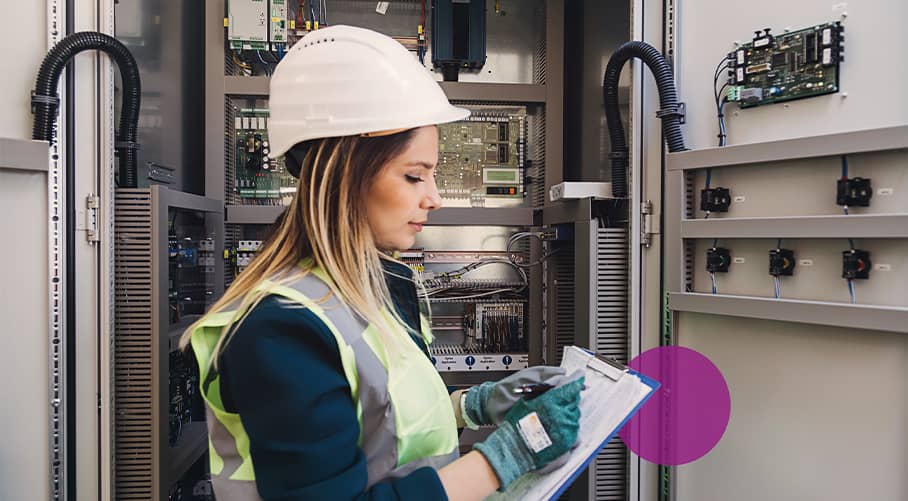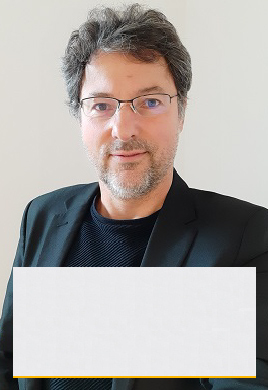Fires are the number one risk for medium-sized companies
Published on Mar 15, 2022
Statistics such as those produced by the French firefighting services in 2019 (which showed that fires in warehouses and industrial premises had fallen by 3% in a year) indicate that the number of fire-related claims filed by businesses is decreasing from one year to the next. However, « fires remain the number one risk for medium-sized companies. And even though they are occurring less frequently, the damage is becoming more and more costly », explains Pierre-François Dezalys, Risk Prevention and Quality Manager.
According to statistics published by the Occupational Risks department of the French National Health Insurance Fund for Employees (CNAMTS) in 2015, in the previous 10 years, an average of 120 fires per year had resulted in employees taking sick leave, 15 serious accidents (where people sustained irreversible injuries) occurring and one person dying. Although all medium-sized companies can be affected by this risk, the most at-risk industries are those with furnaces (e.g. steel/cement/glass plants), which account for nearly 20% of claims, and 15% of fires occur in warehouses and commercial premises. The waste management, surface treatment, agri-food, chemical and wood industries are also particularly susceptible to fires.
Fire-related incidents often have serious consequences – 70% of businesses affected by a major fire cease operations in the following months due to the financial repercussions of the damage caused to their properties. An astonishing amount of damage can be done, whether a plant burns to the ground, offices are flooded with water from the firefighters’ hoses or IT equipment is destroyed.
Costliness
A number of factors contribute to increasing fire damage costs. Firstly, the construction materials used when building or renovating a site influence its fire resistance capacity. Many existing buildings were built using « light » construction materials (metal structures, continuously reinforced concrete (CRC) walls and roofing, and steel sandwich panels), which are less fire resistant than concrete or breeze blocks.
Furthermore, « economic competition encourages companies to severely limit expenditure that is not strictly necessary and does not immediately deliver added value. For instance, fire resisting partitions and doors can help slow the spread of fire and smoke but may be seen as non-essential spending », says Pierre-François Dezalys.
Additionally, automatic fire suppression systems, such as sprinklers, are also costly, with installation prices starting from €250,000 per 1,000 m2 of space on average. Often aging or undersized, electrical equipment increases the risk of short circuits and, along with human error, is one of the main causes of fires.
An increasingly global economy also adds to the impact fires can have on medium-sized businesses. One site being out of action can have a knock-on effect on other subsidiaries within a group, bringing all operations to a halt. Clients may turn against suppliers who cannot deliver the parts or services they requested.
In a lean supply chain with low inventory levels, the slightest hiccup, such as a fire, can throw everything off.
Proactive approaches over reactive ones
To keep disasters at bay, the best protection is prevention. For instance, acquiring a « hot work permit » before beginning one-off « hot work » maintenance activities can reduce the fire hazards caused by welding, cutting or any other activity that produces heat, sparks or flames. In addition to this system, « medium-sized companies should set up crisis units to ensure a quick response in the aftermath of a fire », advises Gilles Piffaretti, Crisis Management Expert at COVÉA-MMA. « With a crisis manager, a coordinator, a record keeper who keeps track of everything that happens and an anticipator who takes a step back to assess the situation, these structures are responsible for choosing a strategy – and methodology – to overcome the crisis in question. »
Prepared upstream, business continuity plans should help crisis unit members activate fail safes to ensure the most critical business activities can resume as quickly as possible before things are back to normal.
To better anticipate crises, crisis unit members – in conjunction with crisis management and business continuity experts, if possible – need to, first of all, identify and analyse accident scenarios that could cause a fire, seeking to quantify the frequency and potential severity of such events. For maximum efficiency, « crisis cell members need to come together regularly to run through crisis management exercises. The idea is to see how they react to surprising, confusing scenarios – such as a meteorite colliding with a factory – and analyse the steps they decide to take », says Gilles Piffaretti. « For more realistic crisis management exercises, it can be helpful to reach out to professionals, healthcare workers, firefighters, city hall departments or prefecture representatives. Their involvement and advice can prove beneficial. »
The need for optional coverage extensions
Other preventive measures include minimising the quantity of flammable substances at a given site, limiting and regulating ignition sources, as well as maintaining a safe distance from sources of ignition. Ensuring access to fire extinguishers, hose stations and a water supply (for firefighters) and fitting fire detectors can also help. It is important to designate first and second response teams and provide them with regular training to ensure they can carry out their work effectively.
Nonetheless, if a fire destroys part of your facilities, having good insurance coverage can help you get your business back up and running more easily and cost-effectively. Although professional indemnity insurance does compensate a policyholder’s neighbours and third parties for fire related damage, it does not compensate the policyholder for their operating losses or cover the environmental damage caused at one of their sites.
Taking advantage of optional coverage extensions is therefore beneficial – or even essential – for medium-sized companies.
Pierre-François DEZALYS
Risk Prevention and Quality Manager at MMA
Gilles PIFFARETTI
Crisis Management division at COVÉA
Read more
-
Construction insurance – coverage to suit your business and projects
The construction and civil engineering market makes up a large proportion of the French economy, despite the decline in new construction projects begun since 2022 and the number of construction companies collapsing at its highest since the 2008 financial crisis.
-
Specialty risks – targeted and appropriate coverage
Certain areas, such as regulated professions, sports and leisure, events, performance art and industrial machines, require specific expertise.
For further information about MMA’s insurance solutions, please contact your insurance broker







